
Watching COVID closely: Mass. hospitals try to stay ahead of a surge
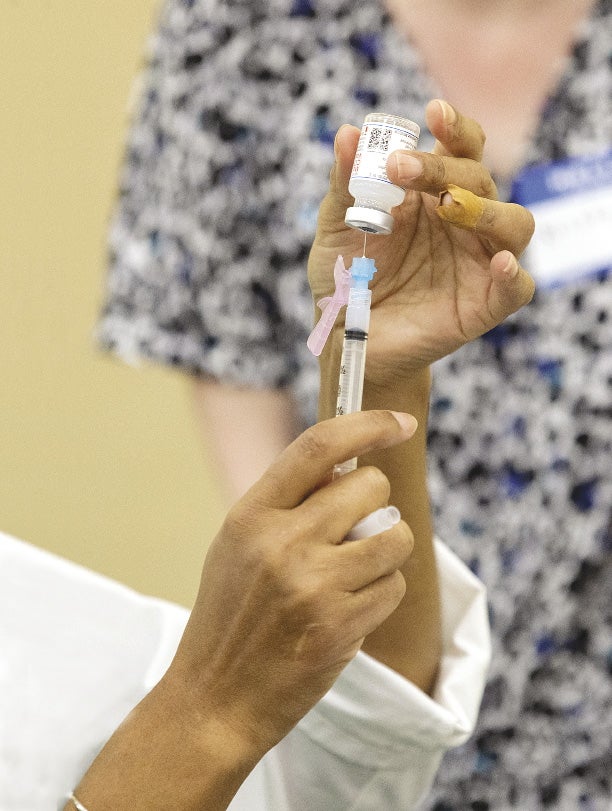 Photo | WBJ FILE
A vaccine vial
Photo | WBJ FILE
A vaccine vial
When UMass Memorial Health in Worcester, the largest health care system in Central Massachusetts and the region’s largest employer, reinstated its caregiver mask mandate on Aug. 25, it was a regulatory change that signaled truth in conversations in and out of medical settings about a COVID-19 surge.
The mandate, applying to all patient-facing interactions, rolled back the removal of a mask requirement put into place in May. As of the first week in September, UMass Memorial is one of nine hospitals nationwide to bring back a mask policy, according to trade magazine Becker’s Hospital Review. It is the only one in Massachusetts.
At UMass Memorial, the updated mask mandate had less to do with the overall uptick of COVID-19 cases in the community, as it does with an uptick in cases among employees.
Through the spring and into late summer, COVID-19 cases among employees hovered around one to two testing positive at any time. That number started to creep up steadily, with first four or five cases, and reaching double digits for the first time in late August. That was the red-flag moment, prompting the health system to enact measures to slow it down, said Dr. Richard Ellison, hospital epidemiologist at UMass Memorial and professor of medicine, division of infectious diseases and immunology at UMass Chan Medical School.

“We are watching this very closely,” Ellison said.
The hospital tracks a number of indicators of a COVID-19 surge, said Ellison, including employees and patients who have COVID, number of patients with COVID who are in the intensive care unit, and the number of patients in the COVID treatment center. All measures have increased since earlier in the summer, said Ellison, though the number of patients who are acutely ill, requiring monitoring in the intensive care unit, remains low.
While employee cases are up nearly tenfold, though overall total number remains low, the hospital is seeing an approximate doubling of patients coming into the hospital with COVID symptoms. Most, said Ellison, are not requiring intensive measures, such as being put on a ventilator.
“For the general population, the worry that someone will end up in the ICU is lower,” he said.
The slight uptick comes as the workforce difficulties of the past few years continue to weigh on hospitals.
“Every hospital has extensive health and safety protocols in place to ensure that both patients and their caregivers are safe. They are still facing severe workforce and capacity challenges, meaning support from the general public remains as important as ever,” Patricia Noga, vice president, clinical affairs at the Massachusetts Health and Hospital Association, said in a written statement to WBJ.
The workforce limitations and limited number of staff trained on certain treatment protocols is a concern at UMass Memorial, too. If too many caregivers become ill and are not able to administer care, it becomes a problem, said Ellison. It is a specific concern for those trained on radiation treatments for COVID-19, as the hospital only has a limited number of those specialists.
If no one is able to deliver that care, patients will be turned away, said Ellison.
“That's what we worry about,” he said.
A COVID uptick
Across Massachusetts, COVID-19 levels are more of a swell than a surge, for now. The seven-day average of confirmed COVID-19 cases, as of Sept. 6, was 256.7, according to data from the Massachusetts Department of Public Health. That’s up from a lowest observed value in June 2021 of 64.1. Since July 4, when the figure stood at 75, the number has steadily increased, but remains low compared to historical data. In December 2022 and January 2023, the figure was more than 1,000 for several weeks, and the all-time peak in January 2022 was nearly 23,000 cases.
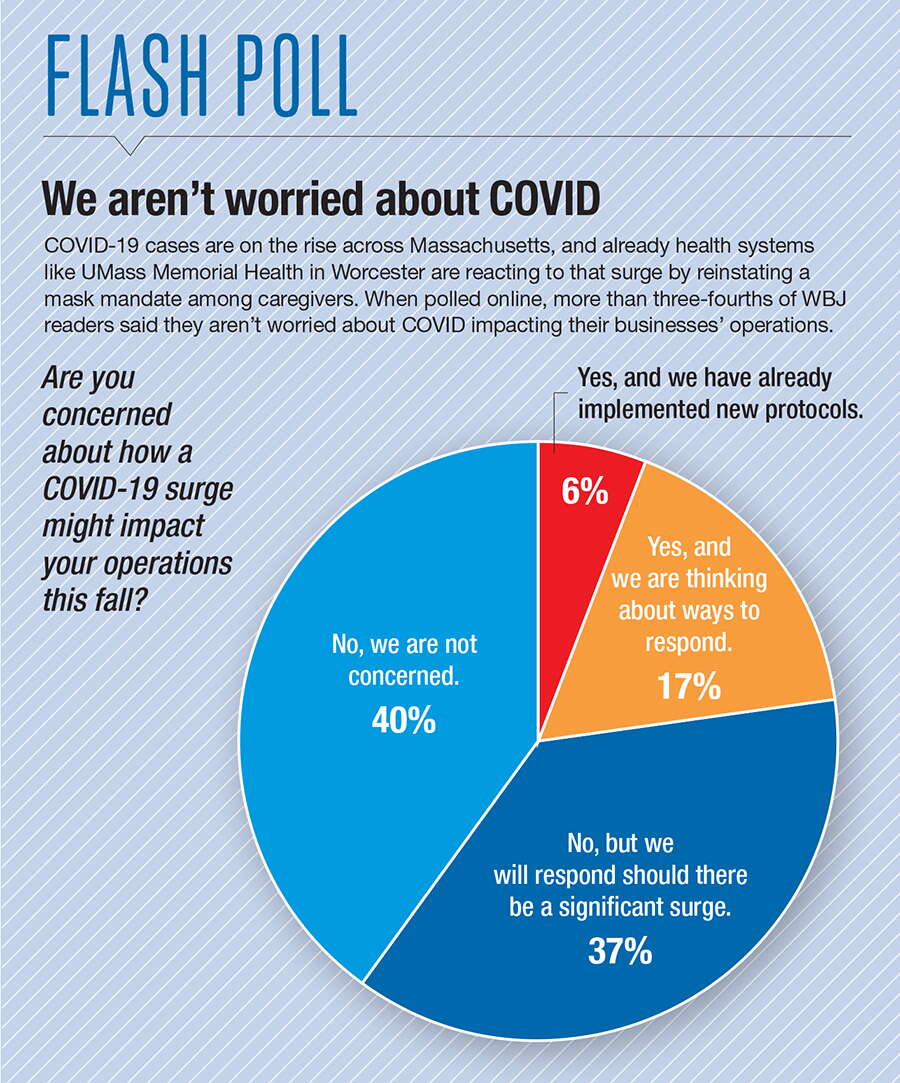
The portion of COVID-19 tests that are positive has increased slightly more, reaching double digits in late August and continuing to rise. Comparatively, in late spring the figure was regularly 2-3%, according to DPH data.
While hospitalizations are up too, at more than 300 as a seven-day average, compared to 100 in July, COVID-19 deaths are remaining low. As of reporting for this story, the figure for a seven-day average of COVID-19 deaths has remained below two, compared to the all-time high of 172.9 in April 2020 and the January 2022 surge, which topped out at 63.7.
Precautions beyond the mask mandate, like requiring staff to test regularly and requiring COVID tests for all patients who come to the hospital, have not been enacted. While these measures have not yet been deemed necessary, Ellison said, the reduced data when compared to previous years poses challenges in knowing the exact COVID-19 positivity rate at the hospital. In the community at large, too, he said, individuals are not reporting results of at-home testing to the state.
“It's a little bit harder to get a sense of what's happening,” said Ellison.
At Milford Regional Medical Center, a modest increase in COVID-19 cases among employees and patients has administrators paying attention, but the hospital is not yet to the point of requiring masks for caregivers or patients, said Dr. Peter Smulowitz, chief medical officer at the hospital.

Like UMass Memorial, Milford Regional is continuously monitoring both internal and external numbers, but has yet to implement changed measures for the current uptick, said Smulowitz.
“We feel confident that with the last three years, we have developed the expertise and knowledge internally that we know how to keep patients and staff safe,” he said.
Winter is coming
COVID-positive figures at Milford Regional have not maintained a significant enough increase for a significant enough period to spark alarm, Smulowitz said, letting him feel confident in the current monitoring approach.
Things may change with the shift into fall and winter, however, said Smulowitz.
“We haven't entered into the season we think will have the biggest uptick,” he said.
Without knowing yet what the colder months will entail, Milford Regional is approaching the season with measured optimism it will be able to appropriately respond to a potential surge.
“We have our fingers crossed for winter to come. We’ll do our job when it gets here,” said Smulowitz.
With the start of the school year, Ellison said the UMass Memorial system is extra attuned to COVID-19 levels and is preparing itself for the possibility it may need to implement additional measures to control the spread of the virus. Community members, too, should take extra care, he said.
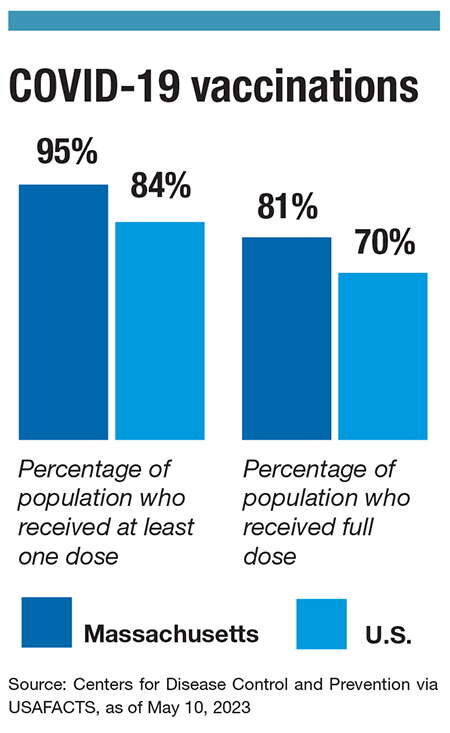
“This is a time to be more cautious again,” said Ellison.
At the Massachusetts Health and Hospital Association, leadership is preparing to support hospitals going into what was once flu season, and is now flu, COVID, and RSV season. MHA is urging the community to support the strained healthcare system, too.
“We are again asking community members to keep up with all vaccines available to them, utilize the ER only for emergency situations, and remain vigilant with many of the basic public health practices that helped get us through COVID-19,” Noga said.


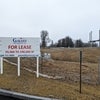






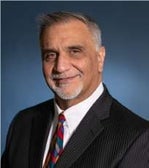



0 Comments